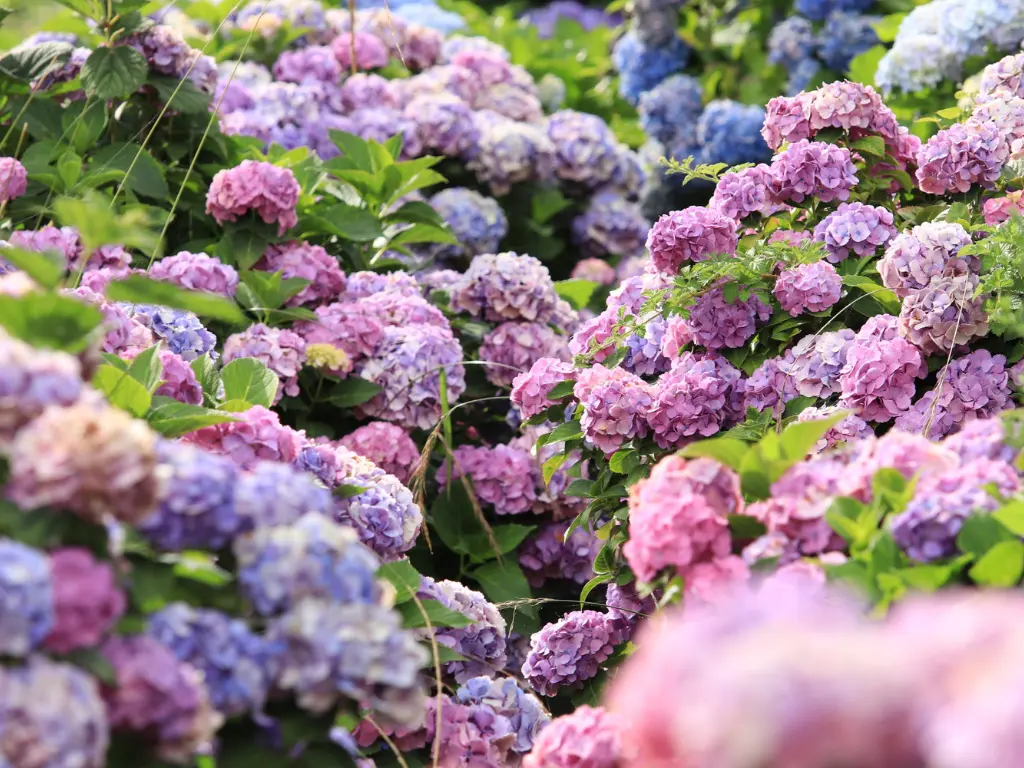Guides
How to Care for Endless Summer Hydrangeas to Enjoy Their Long Blooming Season
If you’ve ever wished for a hydrangea that keeps blooming from the first days of summer straight through fall, the Endless Summer Hydrangea is your dream plant. Unlike traditional hydrangeas that flower just once a season, this beauty blooms on both old and new wood. That means if a late frost nips your early buds, you’ll still enjoy a fresh flush of flowers later in the season.
But here’s the catch: long-lasting blooms require the right care. Endless Summer hydrangeas aren’t fussy, but they do have specific needs that help them thrive and keep flowering month after month. With a little attention, you can have a shrub covered in vibrant blossoms all summer long.
Getting to Know Endless Summer Hydrangeas

Endless Summer hydrangeas belong to the Hydrangea macrophylla group, also called bigleaf hydrangeas. What makes them special is their ability to bloom on both last year’s stems (old wood) and the current season’s growth (new wood). That’s a game-changer for gardeners in cooler regions or areas with unpredictable springs.
The flowers themselves can shift color depending on your soil’s pH, pink in alkaline soil, blue in acidic soil, and sometimes purple in between. This adds a fun, customizable element to growing them.
The Right Planting Spot
Location is everything for Endless Summer hydrangeas. They prefer:
-
Morning sun and afternoon shade. Too much direct, hot sun can scorch leaves and fade flowers, while too much shade will reduce blooming.
-
Moist, well-drained soil. They love consistent moisture but dislike soggy roots. Raised beds or amended soil with compost help create the perfect balance.
-
Protection from harsh winds. Since buds form on old wood, strong winds or sudden freezes can damage next season’s flowers. Plant them in a sheltered spot for best results.
Watering for Long Blooms
Hydrangeas are water lovers, and the “hydra” in their name says it all. To keep Endless Summer hydrangeas blooming, water deeply and consistently.
-
Aim for about 1 inch of water per week, more during hot spells.
-
Water at the base of the plant to avoid wetting leaves, which can invite disease.
-
Mulch around the base to lock in soil moisture and keep roots cool.
Neglecting water is one of the fastest ways to see drooping stems and fewer flowers, so think of your hydrangea as a steady drinker.
Feeding for Bigger, Brighter Flowers
Fertilizer makes a noticeable difference in hydrangea health and bloom power. Endless Summer hydrangeas do well with a balanced, slow-release fertilizer applied in spring. A second feeding in mid-summer can encourage continuous flowering.
For gardeners who like experimenting with flower color:
-
Acidic soil (pH below 6) produces blue blooms.
-
Alkaline soil (pH above 7) produces pink blooms.
-
Adjusting with soil amendments like aluminum sulfate (for blue) or garden lime (for pink) lets you play with your color palette.
Pruning Without Fear
Many gardeners hesitate to prune hydrangeas for fear of cutting off blooms. Endless Summer hydrangeas make things easier:
-
Remove only dead wood and spent flowers in early spring.
-
If a stem looks lifeless after winter, wait until late spring to see if new growth appears before cutting.
-
Light deadheading through summer encourages fresh blossoms but isn’t strictly necessary.
The main rule: don’t overdo it. Since Endless Summer blooms on both old and new wood, heavy pruning can reduce flowering, but careful trimming keeps the shrub healthy and attractive.
Protecting Through Winter
Even though Endless Summer hydrangeas are cold-tolerant, harsh winters can still damage flower buds on old wood. To help them through:
-
Add a thick mulch layer around the base in late fall.
-
In very cold climates, cover the shrub with burlap or a plant cover.
-
Avoid pruning in fall; wait until spring so old wood can help protect buds.
This little extra effort ensures your hydrangea wakes up ready to bloom again next year.
Common Problems and How to Avoid Them
-
Drooping leaves: Usually a sign of underwatering or excessive afternoon sun. Check soil moisture first.
-
Few or no blooms: Could be from heavy pruning, lack of sunlight, or winter bud damage. Focus on protection and light pruning.
-
Yellowing leaves: Often linked to poor soil drainage or nutrient deficiency. Improve soil with compost and ensure water doesn’t pool at the roots.
Frequently Asked Questions
1. Do Endless Summer hydrangeas really bloom all season?
Yes, that’s their specialty. They flower on both old and new wood, giving them the ability to rebloom throughout summer and into fall.
2. Can I grow them in containers?
Absolutely. Choose a large pot with good drainage, water regularly, and place it where it gets morning sun and afternoon shade.
3. Should I deadhead the flowers?
Deadheading isn’t required, but removing spent blooms can tidy up the shrub and encourage more flowers later in the season.
4. How do I change the flower color?
Adjust the soil pH. Acidic soil makes flowers blue, alkaline soil makes them pink. Amend gradually and monitor results over time.
5. Are Endless Summer hydrangeas good for cut flowers?
Yes, they make beautiful, long-lasting arrangements. Cut stems in the morning and place them immediately in fresh water.
Conclusion
Endless Summer hydrangeas live up to their name when you give them the right care. With proper planting, steady watering, balanced feeding, and a little protection in winter, they’ll reward you with wave after wave of colorful blossoms from June until frost.
Unlike traditional hydrangeas that only give you one show per year, Endless Summer keeps the curtain up all season long. By learning its simple needs, you’ll enjoy a shrub that not only survives but thrives, turning your garden into a stage of continuous beauty.

